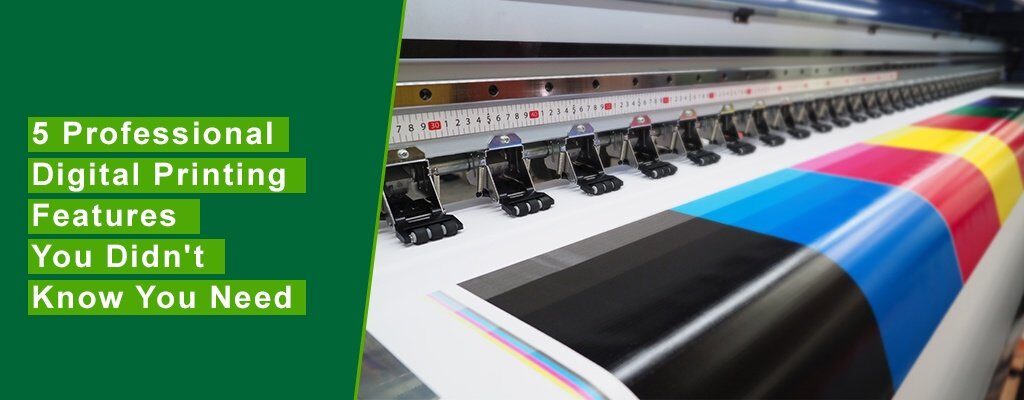Many artists are transforming their work into profit through print on demand.
Many artists are transforming their work into profit through print on demand.
Blog Article
Understanding Exactly How Digital Printing Changes the Printing Industry
The printing sector, long steeped in conventional approaches, is undergoing an extreme change with the introduction of electronic printing. This innovative innovation, which eschews the requirement for publishing plates, enables fast manufacturing and modification, reshaping the landscape of print communication. With its possible to stimulate interaction via personalized content and to provide lasting remedies, it's clear that electronic printing is greater than a technical innovation; it's an essential video game changer. Exactly how specifically does it change the sector? Allow's discover.
The Advancement of Digital Printing: A Quick Introduction
Considering that its creation, digital printing has actually undertaken considerable improvements, continuously reinventing the printing industry. Its evolution began with the advancement of xerography in the mid-20th century, a process which laid the foundation for laser printers. With the arrival of the 90s, digital printing technology started to develop, and the sector experienced the introduction of straight imaging presses, which got rid of the requirement for printing plates. As the brand-new millennium unravelled, improvements in innovation further stimulated the growth of digital printing, leading to the creation of high-speed inkjet printers. These gadgets offered superior high quality and rate, permanently changing the landscape of the industry. Today, electronic printing stands as a testament to human advancement, continually progressing to fulfill the ever-changing demands of the modern globe.

Unpacking the Technology Behind Digital Printing
Diving into the intricacies of digital printing technology, one runs into a rich tapestry of innovative machinery and facility formulas. At the heart of this procedure exists an electronic photo, which is refined by software that separates it right into a grid of dots. These dots are after that exchanged a digital code. This code is interpreted by the printer, which uses it to specifically deposit droplets of ink onto the substrate. The beads are so little and precise that they produce an image that is essentially equivalent from the original. This complex system, strengthened by advanced software application and high-resolution imaging, has changed the landscape of the printing industry, paving the means for unprecedented degrees of information and precision.

The Advantages of Digital Printing for Organizations
Recognizing the technology behind digital printing gives a clear picture of its accuracy and information. For companies, this translates into many advantages. Digital printing provides unprecedented rate, making it possible for firms to fulfill limited deadlines without compromising on top quality. Next, it reduces expenses as there are no plates or physical setup, making it best for small-volume printing tasks. In addition, this modern technology provides exceptional uniformity with each print outcome, eliminating variants often seen in traditional approaches. Electronic printing is ecologically friendly, using less ink and generating less waste. The full potential of electronic printing is recognized when utilized for modification and customization, a topic that will be covered in deepness in the following area.
The Duty of Digital Printing in Customization and Personalization
While conventional printing techniques struggle with customization and personalization, digital printing succeeds in these locations. It enables the easy alteration of designs, without the demand for costly and taxing plate adjustments (print on demand). This allows organizations to customize items to private customers, conference details demands and improving consumer complete satisfaction
Digital printing also enables variable information printing, where aspects such as text, graphics, and pictures may be changed from one published item to the next, without reducing the printing process. This is specifically beneficial for straight marketing campaigns, where personalized messaging can substantially enhance response prices. This way, electronic printing not only transforms the printing market but likewise changes the method organizations interact with their clients.
Analysing the Ecological Effect of Digital Printing
Although electronic printing has actually been admired for its duty in customization and personalization, it is vital to examine additional resources its ecological influence. Digital printing can be less inefficient than traditional methods, because it operates on a 'print on need' basis, removing the requirement for huge print runs that can result in excess and waste. In addition, it utilizes less pop over to this web-site chemicals and creates less unstable organic compounds (VOCs) compared to offset printing. Nevertheless, the power use of digital printers can be high, leading to enhanced carbon footprint. The use of non-recyclable printing components and the difficulty of e-waste management present substantial ecological problems. For that reason, while electronic printing has lots of benefits, its environmental effect needs to be conscientiously taken care of.
Final thought
To conclude, electronic printing has changed the printing market, More hints providing fast, economical, and premium solutions. It assists in personalization, enhancing client interaction, and employs a sustainable print-on-demand design. As this modern technology proceeds to progress, its influence on service communication, customer complete satisfaction, and environmental sustainability ends up being increasingly extensive. Recognizing these modifications is vital for services to leverage the advantages of digital printing effectively.
Report this page